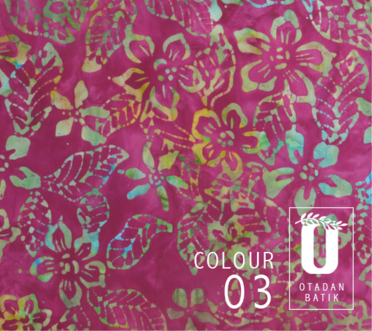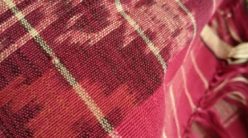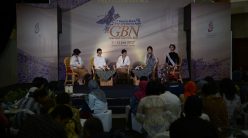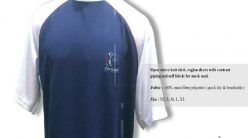One of the most famous Indonesian charms abroad is wastra, or Indonesian authentic fabrics. The popularity and uniqueness of this Indonesian product has even been named UNESCO as world cultural heritage. Wastra is an Indonesian product that also an endless source of inspiration. The philosophical values embodied in each of its styles become the identity and strength of the Indonesian fashion industry. The richness of Indonesian fabric motifs also brings optimism to many sectors, especially the fashion sub-sector in the creative economy.
Ulos
In the Batak belief, there are 3 sources of warmth in the world: the sun, fire, and ulos cloth. Based on this expression, it is not surprising that ulos has high life value for the Batak people.
Ulos was used to warm the body, over time, ulos cloth has a symbolic function in all aspects of Batak people’s life. For example, Ulos Bolean and Ulos Sibolang are used to attend mourning ceremonies. Meanwhile, the Maratur Star Ulos cloth is a symbol of joy.
Ulos cloth is generally dominated by red, black, and white. While the various motifs of this cloth refer to the customs and philosophical values of the local community.
Songket
The word songke_t is said to come from the word _sungkit which means to slip. This refers to the process of tucking gold threads on a piece of cloth with certain pattern that become the characteristic of songket cloth.
According to a growing local story, the presence of songket in Indonesia came from the glory of Sriwijaya Kingdom. Besides Palembang, Bali, and Lombok are also famous songket producers in Indonesia. This cloth is usually used as a complementary cloth in traditional ceremonies.
The difference in songket from each region in Indonesia generally lies in the motif. To date, there are total of 71 Indonesian songket motifs typical of South Sumatra, and hundreds of other motifs from various regions in the country.
Sasirangan
Sasirangan is an Indonesian traditional cloth originating from Banjar tribe, South Kalimantan. The name sasirangan is taken from the word menrang. This refers to how to make sasirangan cloth through basting process using obstacles and coloring.
According to traditional stories, this cloth comes from 12th century. Sasirangan cloth is believed to have magical powers for the treatment and protection of evil spirits. This is what affects the color of sasirangan cloth.
As if it will be used to treat jaundice, the color of the cloth is also made yellow. Even though they have beautiful and striking colors, all the dyes for sasirangan are taken from nature ingredients, such as turmeric, ginger, gandaria fruit seeds, and rambutan skin.
In addition to Indonesian authentic fabrics above, there are still many types of fabrics that are found in Indonesia. Currently, Indonesian fabrics are a source of inspiration for Indonesia’s creative economy, each of which has its own characteristics.
–sh





